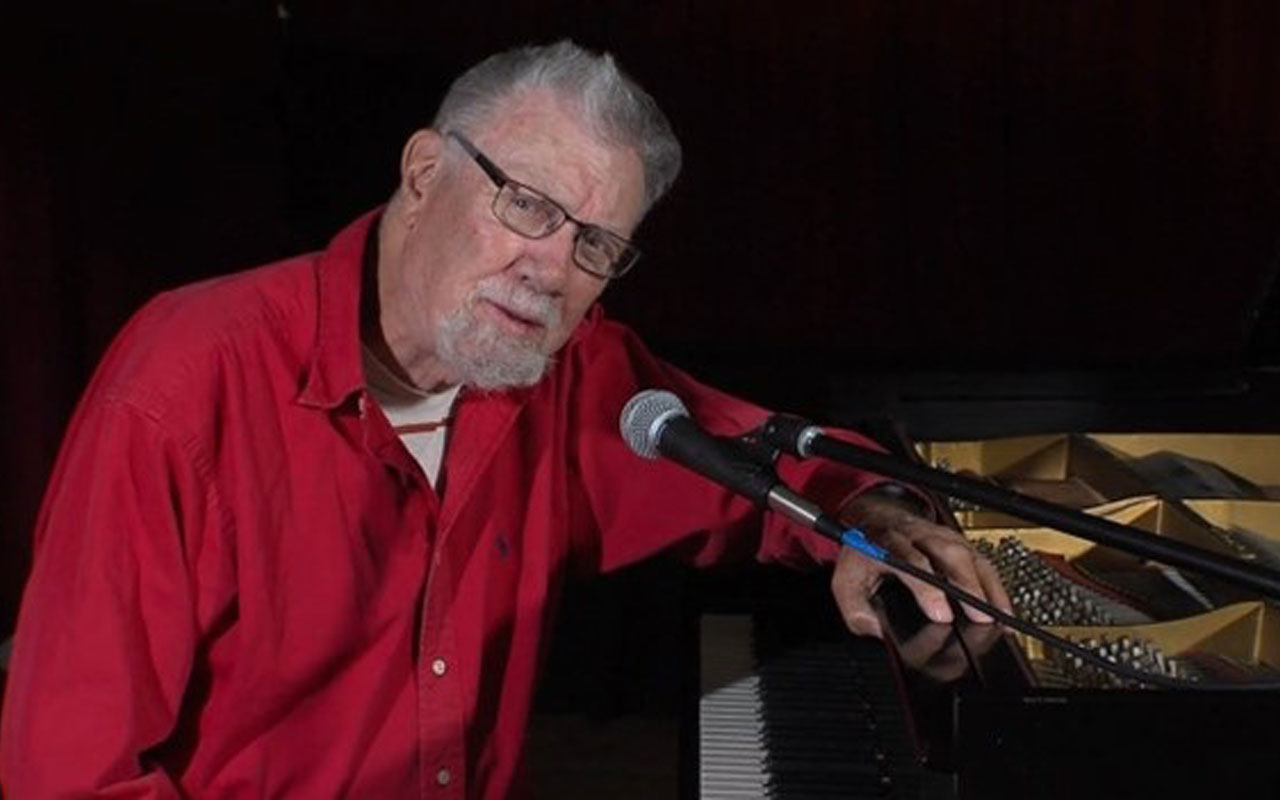
Ray Skjelbred photo courtesy of the artist
Earshot Jazz is proud to share brief excerpts from the forthcoming book, After the Bottle Clubs Closed: Seattle Jazz in the Modern Era (History Press of Charleston, S.C.), by Seattle’s preeminent jazz writer, Paul de Barros, and Seattle-based music journalist Alexa Peters. Picking up where Jackson Street After Hours: The Roots of Jazz in Seattle (Sasquatch Books, 1993) left off, the new book will feature fascinating interviews with the familiar artists and under-sung heroes who shape this vibrant jazz scene.
Are you hip to pianist Ray Skjelbred? He travels mostly in traditional jazz circles and was off the Northwest scene for a long time, but if you love quality, classic jazz of any stripe, check this guy out. He radiates clarity, intelligence, originality, and joy. His trio with reed player Jacob Zimmerman and bassist Matt Weiner plays regularly at The Royal Room (watch their crisp performance this past January on YouTube). He also plays solo from time to time.
Back in 1960, Skjelbred – pronounced “shellbread” – studied with the great Seattle trad pianist Johnny Wittwer while attending the University of Washington, then co-founded Great Excelsior, one of Seattle’s first – and very best – classic jazz bands. Over the years, he has hung out with Earl Hines, Milt Hinton, Joe Sullivan, and Jess Stacy, to name just a few of his well-known friends. In 2017, he recorded a lively, concise and informative documentary at The Royal Room, Piano Jazz – Chicago Style!, which won the New York Jazz Film Festival’s historical documentary award. (Watch it on YouTube.)
The following are (edited) excerpts from a February 2024 conversation.
BY PAUL DE BARROS
I played accordion when I was a kid but didn’t start playing piano until I was 19. Johnny Wittwer was playing in a band, either at the Blue Banjo or Louie’s (Old Chicago). He was just beginning to give piano lessons. And I thought, Yes! That’s what I want to do. By the time I was 20, I was playing jobs.
One of the things he taught me was to have the feeling of what you’re hearing, of swinging, before you start playing. Johnny played regularly at the Grove (a club in the old Grosvenor Hotel, at Sixth and Denny). I’d go down there, and he’d have me play a few songs. Another time, we went to an after-hours club where the music didn’t start till after midnight. It wasn’t exactly music I wanted to listen to. He said, “This is King Oliver today.”
Graduating in 1964, Skjelbred taught English and played music while living on a houseboat on Lake Union. After numerous forays to the San Francisco Bay Area, he moved there in 1969, earning an M.A. in English at San Francisco State University and continuing to teach school.
The first piano player I met there who was a big influence was Burt Bales. The way he touched the piano became the way I wanted to touch the piano. I’ve been very lucky. I felt really close with Jess Stacy and Joe Sullivan. I was also good friends with (clarinetist) Darnell Howard. One summer we spent almost every day together.
At Earthquake McGoon’s, a famous San Francisco trad jazz club, Skjelbred worked intermissions with the great singer Victoria Spivey, and in 1983, was hired by the longtime house bandleader, Turk Murphy for a four-year stint. Most musicians would rather play than teach, but Skjelbred found otherwise.
For a lot of people, it was a dream come true to play with Turk Murphy, but it was six to seven nights a week. We never stopped, and it never stopped. I told the guys, I gotta get out of this. I didn’t want to be a musician all my life. I wanted to be a teacher.
Skjelbred retired from teaching in 2007 and moved back to the Seattle area, where he continues to play, write poetry – he has published two volumes of poetry – and record. You might start with Piano Solo and A Few Poems (Triangle Jazz). You can find a full inventory of his albums on rayskjelbred.com.